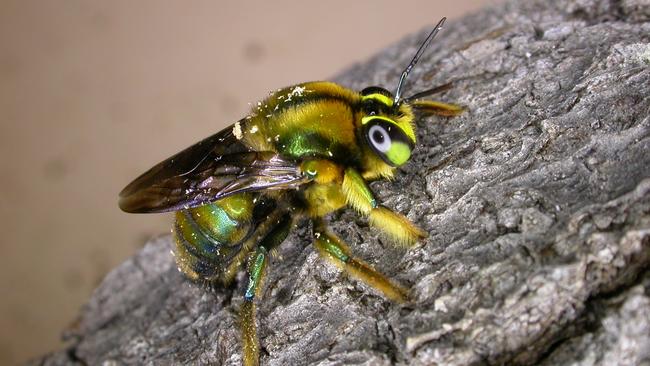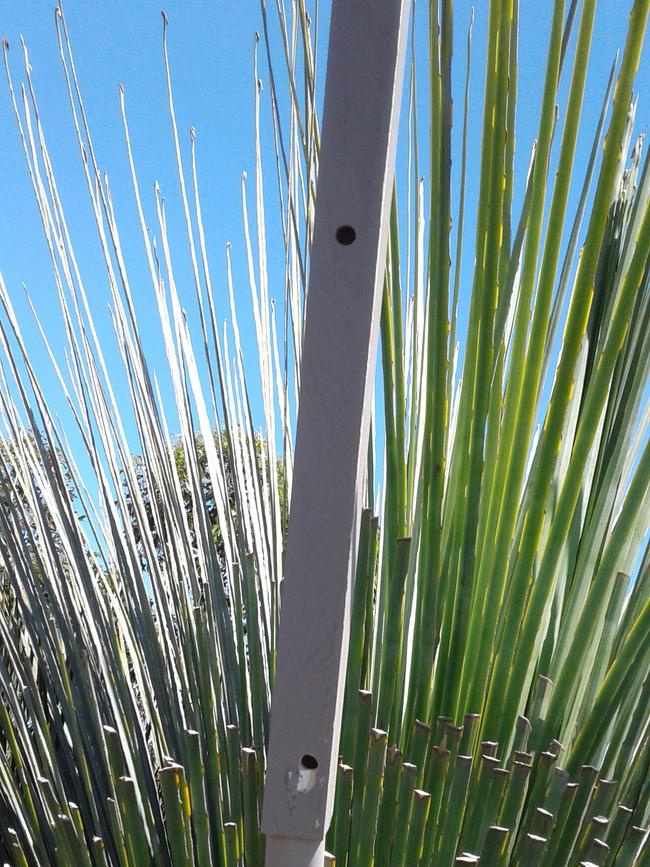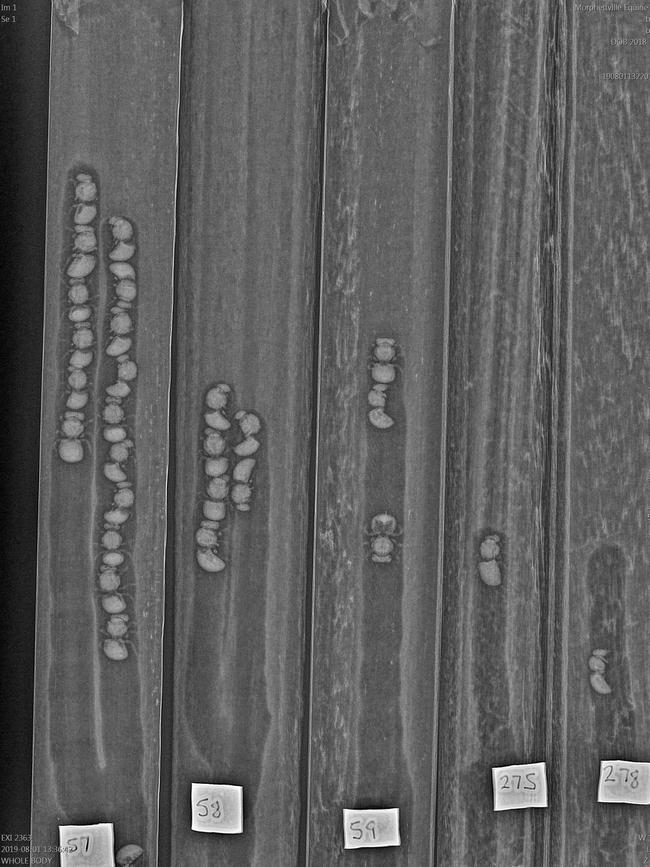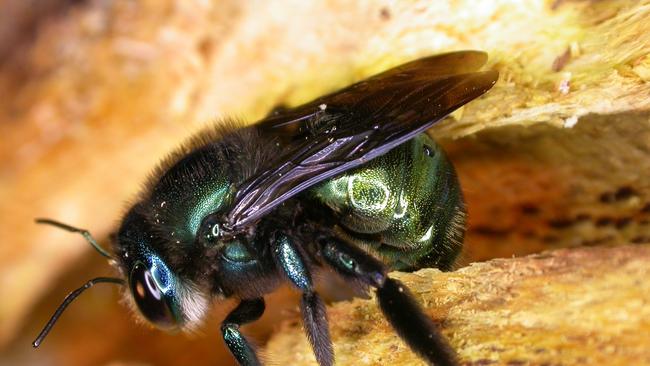Kangaroo Island’s endangered green carpenter bee needs help to recover after bushfires
Scientists helped Kangaroo Island’s endangered green carpenter bee recover after the 2007 bushfires by offering balsa wood nesting sites. Tragically, all but one of the 160 occupied nests are believed to have burnt in the latest fires. But hope is not lost.

Bushfire Support
Don't miss out on the headlines from Bushfire Support. Followed categories will be added to My News.
- How your garden and Aussie bees can save the world
- SA Museum researcher explains why we need backyard bee hotels
- Bees of Australia: A Photographic Exploration by James Dorey
- The latest digital subscription offer: $1 for the first 28 days
A glittering jewel of nature, the endangered green carpenter bee, is in grave danger. Habitat is scarce and nesting material is even harder to find. But scientists, working with volunteers, have a plan to save the species.
The beautiful native bee, found only on Kangaroo Island and the Blue Mountains of NSW, both areas that have burnt this summer, nests in soft wood, usually the dry stalk of a yakka (grass tree) or gnarled trunk of a banksia tree.
When the 2007 fire in Flinders Chase National Park burnt large areas of the bee’s habitat, University of Adelaide research associate Dr Katja Hogendoorn developed the idea of artificial nest sites in balsa wood, which helped rebuild the population.


But this fire was much worse, destroying all but one of the 160 occupied nests at nine different sites in the park.
A survey is planned for June, when it is hoped travel restrictions will have eased.
SA Museum honorary researcher Dr Remko Leijs has been studying the KI green carpenter bee since 1996. It was the subject of his PhD. He says all hope is not lost, but there’s no time to waste.
“We estimate that there’s about five per cent of suitable bee habitat left, outside the national park,” Dr Leijs said.
“We need to visit those sites and see if there are any bees, but the most important thing is to give them a place to nest, so they can build up their population and later move in to the burnt areas, when the flower resource is available for them again, but that’s a longer term thing that will take at least a couple of years.”
Dr Leijs said the project team and volunteers must carry on, because “that’s the only thing we can do”.
“It’s tragic and I must say I’m a bit depressed of course, not only because our conservation project for bees is basically set back to time zero after six years work on it, that is just this bee,” he said.
“But just realising how severe those burns were, especially on Kangaroo Island the things that were burnt and the species that were lost will never come back, because it is an island the chance of recolonisation is slim.”
If there are insufficient bees left, there may be an opportunity for a reintroduction from the last remaining mainland colonies in NSW, but their conservation status will also need to be assessed after fires there.

Dr Leijs says the bee is an important part of the ecosystem, a pollinator for native plants. If the species is left to go extinct, there may be unforeseen consequences for other organisms. It would also be a loss because the creature is so beautiful, a bumblebee-sized buzzing jewel of nature.
The project received a $15,000 community grant through the ANZ Seeds of Renewal Program, announced in December.
Flow Hive is also donating all profits from sales of their Flow Pollinator House to The Green Carpenter Bee Conservation Project.
SA Museum is accepting donations through their web page:

